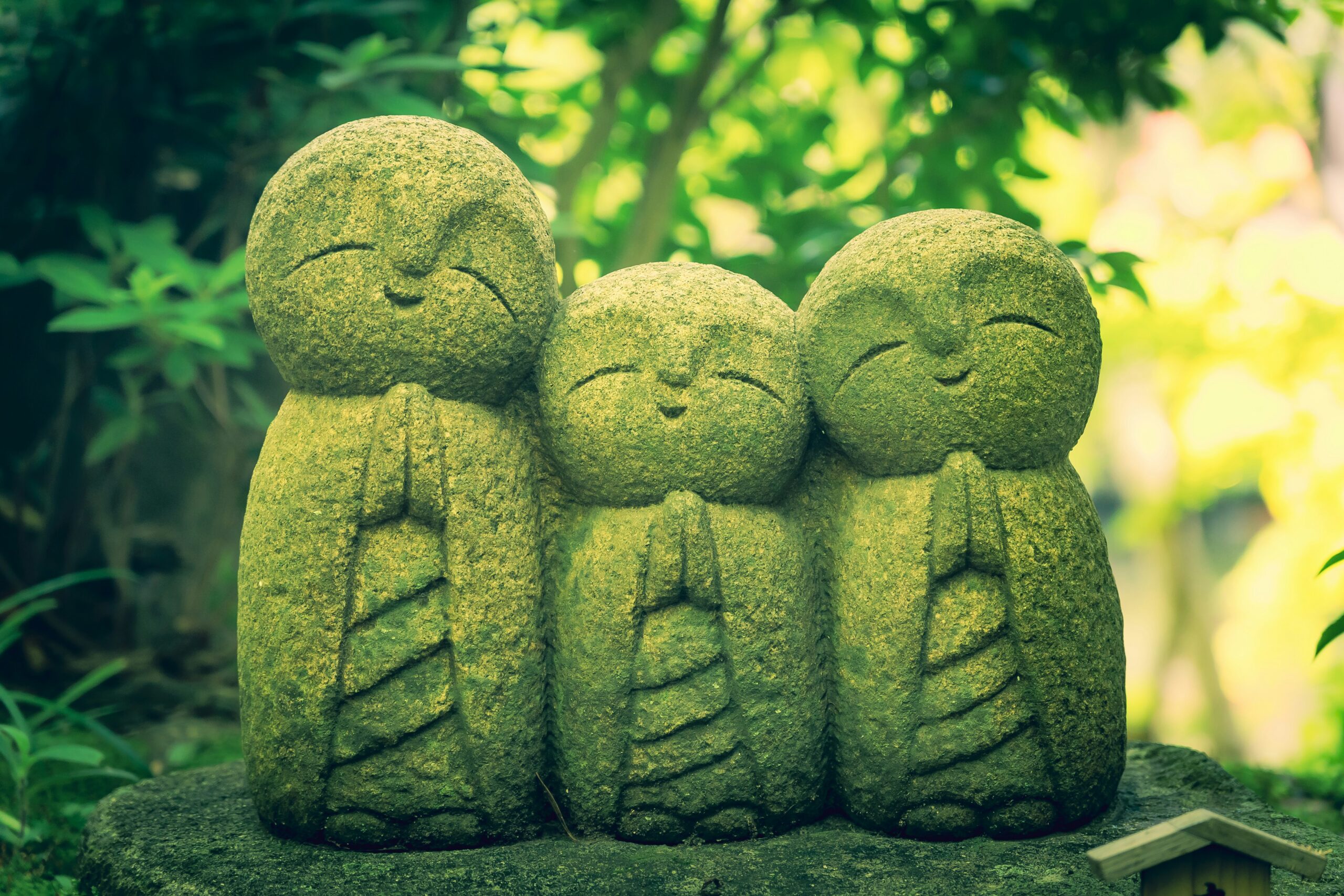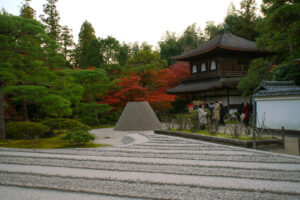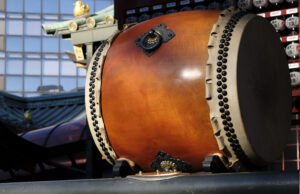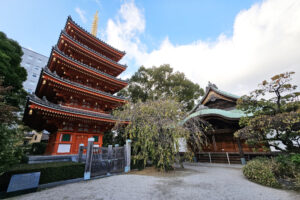The gentle gaze of Jizo statues has been a comforting presence in the Japanese landscape for centuries, embodying a rich tapestry of cultural, religious, and artistic significance. These statues, representing the Bodhisattva Jizo, who is venerated in Mahayana Buddhism, have transcended their spiritual origins to become a familiar sight in Japan, standing guard at temple precincts, roadside shrines, and even in natural settings. This article delves into the world of Jizo statues, exploring their origins, significance, and the enduring legacy that continues to inspire devotion and respect across Japan and beyond.
Unveiling the Mystique: Jizo Statues Explained
Jizo statues represent Jizo Bodhisattva, known in Japanese Buddhism for his vow to save all beings from suffering before entering Nirvana. Characteristically depicted as a monk with a bald head, carrying a staff to alert insects of his approach to avoid harming them, and a wish-fulfilling jewel to light the darkness, Jizo is a figure of immense compassion. These statues are often adorned with red bibs and hats, a tradition believed to protect the souls of deceased children. Jizo’s roles extend beyond this, acting as a guardian for travelers, firefighters, and pregnant women, illustrating his versatile nature in safeguarding various facets of human life.
The Origins of Jizo: From India to Japan
Jizo Bodhisattva’s roots trace back to the Sanskrit name Ksitigarbha, meaning "Earth Womb," first emerging in Indian Buddhism before spreading to China and Korea, and eventually reaching Japan by the 8th century. His transition across cultures saw a significant evolution in his representation and the roles he undertook. In Japan, Jizo’s image was molded by the amalgamation of indigenous beliefs with Buddhist teachings, leading to his unique position in the Japanese religious landscape as a protector of the vulnerable and a guide for souls in the afterlife.
Guardian of Travelers: The Jizo Statues’ Role
To the weary traveler in ancient Japan, the sight of a Jizo statue along the roadside was a source of comfort and protection. These statues were believed to ward off evil spirits and provide safety for those journeying through the unpredictable and often dangerous landscapes. Today, Jizo continues to be revered as a guardian of travelers, with statues prominently placed at roadsides, near bridges, and in tunnels, offering a symbolic presence that ensures safe passage.
Jizo Statues in Japanese Culture: A Deep Dive
In Japanese culture, Jizo statues hold profound significance, embodying themes of mercy, protection, and guidance. Their presence in everyday life is a testament to the deep-rooted belief in Jizo’s power and benevolence. From the poignant rituals observed by grieving parents to the festivities celebrating his virtues, Jizo plays an integral role in various aspects of Japanese society, offering solace and hope to many. The practice of dressing the statues in red garments, a tradition stemming from the desire to protect children and to thank Jizo for his guardianship, illustrates the personal and communal connections fostered through these sacred sculptures.
The Artistry Behind Jizo Statues: An Overview
Crafting a Jizo statue is a spiritual endeavor that blends artistry with devotion. The materials used—commonly stone, wood, or metal—are chosen with care, each element imbued with symbolic significance. Artisans approach the creation of Jizo statues with reverence, mindful of the sacred function these images serve. The stylistic traits of Jizo statues, while adhering to traditional iconography, also bear the unique signature of the individual artist, making each statue a distinct piece of cultural heritage.
Sacred Sites: Mapping Jizo Statues Across Japan
Japan is dotted with myriad sites where Jizo statues stand in silent vigil, from the snowy pathways of Hokkaido to the sun-drenched islands of Okinawa. Notable locations such as the Zojoji Temple in Tokyo, with its garden of Jizo statues commemorating unborn children, and the paths leading to the ancient temples of Kyoto, where Jizo is honored in various forms, highlight the widespread veneration of this Bodhisattva. These sacred sites, each with their own history and traditions, invite pilgrims and tourists alike to explore the spiritual landscape of Japan.
Jizo Statues and Child Protection: A Spiritual Bond
The bond between Jizo and the protection of children is one of the most touching aspects of Japanese spiritual culture. Parents who have suffered the loss of a child often place Jizo statues in temples or at roadside shrines, offering prayers and small gifts in the hope that Jizo will guide their child’s soul safely through the afterlife. This practice reflects a broader belief in Jizo’s role as a guardian of children, not only in death but in life, safeguarding the young and vulnerable from harm.
The Rituals and Ceremonies of Jizo Worship
Rituals and ceremonies dedicated to Jizo are integral to his veneration, ranging from simple acts of placing a stone at his feet to the elaborate celebrations of Jizo Bon, a festival in his honor. These practices, varying from region to region, are a testament to the adaptable and inclusive nature of Jizo worship. Through chants, offerings, and communal gatherings, devotees express their gratitude, seek protection, and commemorate the souls of the departed, reinforcing the societal values of care and compassion that Jizo embodies.
Preserving the Legacy: Jizo Statues in Modern Times
In contemporary Japan, Jizo statues continue to be a relevant and revered presence, bridging the gap between the past and the present. Efforts to preserve and protect these cultural artifacts are evident, with restoration projects and initiatives to educate the public about their importance. Moreover, the universal themes of empathy and safeguarding the vulnerable, as represented by Jizo, resonate deeply in today’s society, making his legacy as potent as ever.
Jizo Statues Beyond Borders: Global Veneration
The veneration of Jizo has transcended Japanese shores, finding a place in the hearts of people around the world. In countries with Buddhist communities and beyond, Jizo statues are increasingly common, serving as symbols of peace, protection, and perseverance. This global spread is a testament to the universal appeal of Jizo’s compassionate mission, highlighting the interconnectedness of human experiences across cultures.
The Impact of Jizo Beliefs on Japanese Society
The beliefs surrounding Jizo have had a profound impact on Japanese society, shaping attitudes towards compassion, community responsibility, and the afterlife. Jizo’s omnipresence in daily life and his role as a protector create a tangible sense of security and moral guidance. This influence extends beyond the religious sphere, embedding itself in the cultural consciousness and fostering a collective ethos of empathy and care.
Looking Forward: The Future of Jizo Statue Traditions
As Japan continues to evolve, so too does the tradition of Jizo veneration. While maintaining their historical and cultural significance, Jizo statues are also a symbol of the changing face of spirituality in Japan. New interpretations and practices emerge, blending traditional beliefs with contemporary values. The enduring legacy of Jizo, with its themes of protection, compassion, and communal well-being, offers a guiding light for future generations, ensuring that the sacred bond between society and the spiritual realm continues to flourish.
The Jizo statues of Japan stand as silent guardians of the nation’s soul, embodying centuries of spiritual tradition and cultural heritage. Through exploring their origins, significance, and the rituals that surround their veneration, one gains insight into the deep well of compassion and community that characterizes Japanese society. As these statues continue to watch over the land, their legacy of protection, empathy, and guidance remains a beacon of hope, not only for Japan but for the world at large, underscoring the timeless relevance of Jizo’s compassionate mission in the modern era.








